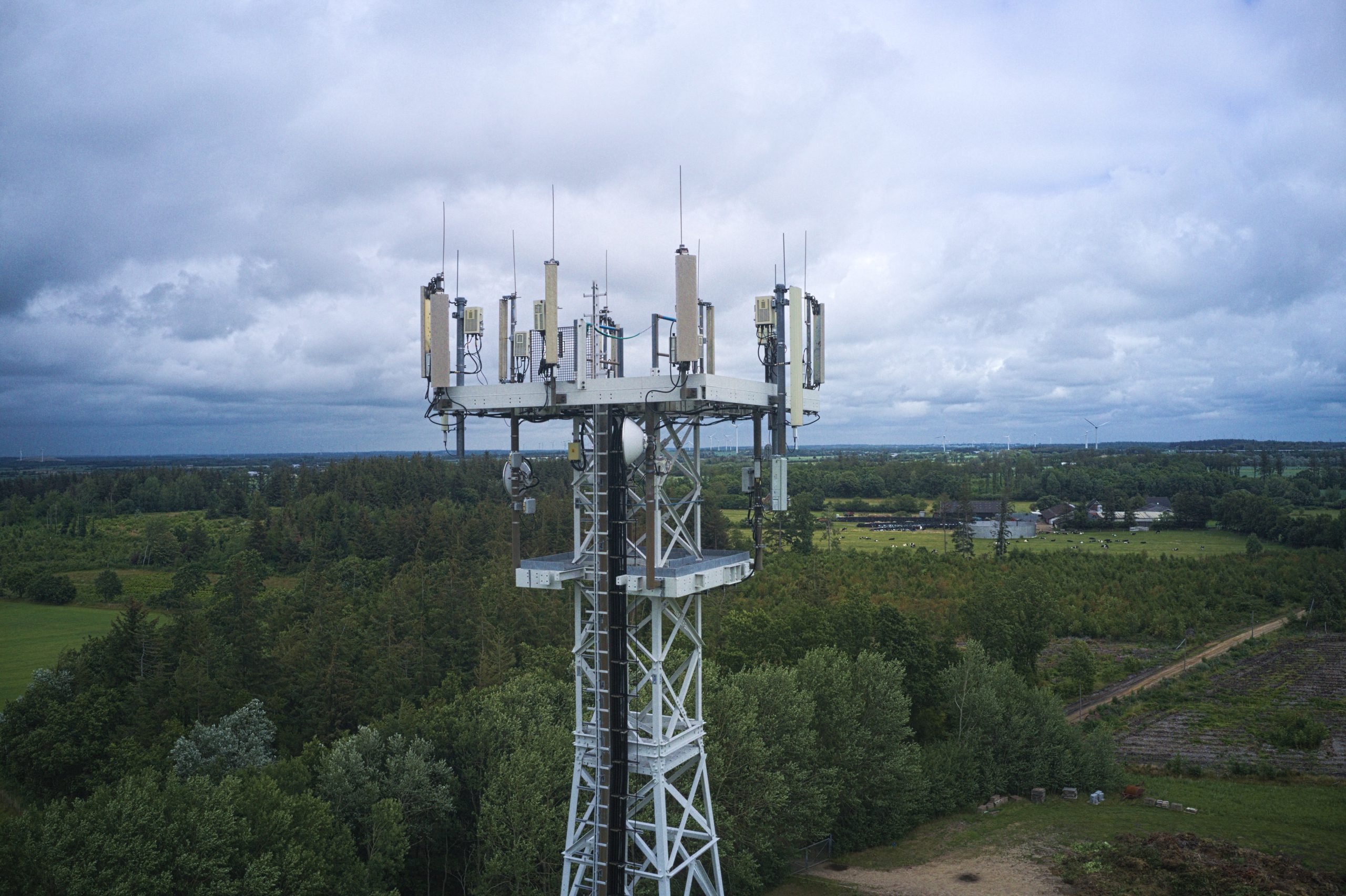Silicon Valley’s oracle, Vinod Khosla, has been selling tomorrow’s tech revolution with the confidence of Doc Brown waving a flux capacitor. The billionaire venture capitalist, whose early bet on Sun Microsystems turned into a tech legend, now predicts a future where robots walk among us, AI becomes everyone’s expert, and fusion energy powers it all. But strip away the TED Talk optimism, and what remains is a mix of genuine insight, convenient oversight, and predictions that somehow always end with “…and investors should get in now.”
The tech visionary’s track record warrants attention despite the hype. Unlike most futurists who merely talk, Khosla puts actual billions behind his predictions. His current forecast reads like a sci-fi movie trailer—bipedal robots taking jobs, AI doctors replacing physicians, and fusion reactors solving climate change. Yet beneath the glossy surface lurk serious questions about who benefits from these revolutions. And more importantly, who pays the price when visions collide with the messy reality of implementation?
10. Super Hot Geothermal: Untapped Power Under Our Feet

Super-hot geothermal technology targets heat resources deep underground that could provide continuous, clean energy virtually anywhere on the planet. Unlike the perpetual “breakthrough just around the corner” narrative surrounding fusion, geothermal builds on proven technology with a clear path to scaling. It’s the Cinderella of clean energy—overlooked while flashier technologies grab the spotlight, yet potentially more practical in the near term.
The approach makes practical sense: Earth contains enormous heat energy, and we’ve mastered techniques for drilling deep holes from the oil and gas industry. Combining these realities could create dispatchable clean power without the intermittency issues plaguing wind and solar. While technical challenges remain in handling extreme temperatures and pressures, the fundamental physics is straightforward compared to containing plasma at millions of degrees. Geothermal lacks the sci-fi appeal of fusion or the visible presence of solar panels. Still, its potential for reliable, 24/7 clean energy deserves the attention currently directed toward more speculative technologies.
9. AI as a Superpower: Amplification for Some, Replacement for Others

AI productivity tools supposedly amplify human capabilities, similar to Iron Man’s suit, enhancing Tony Stark. The sales pitch sounds impressive: deep research capabilities, alternative perspectives on demand, knowledge synthesis at superhuman speed. But this narrative skips over a key detail—these powers primarily flow to knowledge workers who are already at the top of the economic ladder. For them, AI truly becomes a superpower. For everyone else, it’s more comparable to competition.
Organizations rushing to implement these systems focus on the productivity gains while downplaying the fundamental restructuring of work that follows. The middle manager who uses AI to analyze data more effectively keeps their job. The analysts who previously did that work find themselves competing against algorithms that never sleep, never ask for raises, and improve exponentially. This bifurcation—amplification for some, replacement for others—represents the unspoken reality behind the sunny “AI superpower” narrative pushed in corporate boardrooms and investor decks.
8. Personal Health Optimization: Biohacking for Billionaires

The personal health optimization movement promises a world where everyone enjoys perfect health through advanced diagnostics and personalized interventions. In reality, it currently resembles a high-tech country club, where membership starts at five figures per year. Companies offering comprehensive testing packages cost more than many Americans spend on annual healthcare. It’s comparable to “Elysium” without the space station—advanced health technology reserved for those who need it the least.
This growing sector reveals a troubling pattern in biotech innovation—solving problems for those who can pay premium prices rather than addressing widespread health challenges. Proponents argue that these technologies will eventually become affordable for everyone, much like smartphones trickled down from luxury to necessity. But healthcare doesn’t follow the same adoption curves as consumer electronics. Without deliberate efforts to expand access, these systems risk cementing a two-tier health future: preventive, personalized care for the wealthy versus reactive, generic treatment for everyone else.
7. Abundance of Resources: Digital Prospectors Strike Gold

Advanced resource exploration technologies promise to transform scarcity into abundance by identifying deposits deep beneath the Earth’s surface. This narrative fits neatly into tech’s favorite template—technology solving resource limitations without requiring any changes to consumption patterns. It’s the digital equivalent of finding new frontier lands to exploit after existing territories have been depleted—extending our current approach rather than fundamentally rethinking it.
The technology itself represents genuine innovation with potential benefits. AI-driven exploration combined with advanced sensing and extraction methods could indeed access previously unreachable materials without the environmental devastation of traditional mining. But framing this as creating “abundance” rather than “more efficient extraction of finite resources” reveals the Silicon Valley blind spot for physical limits. Even with perfect knowledge of subsurface deposits, the Earth contains fixed amounts of each element. Technology can improve our ability to find and extract resources, but it cannot create unlimited quantities of atoms that don’t exist. True sustainability requires facing this reality rather than promising magical technological escape hatches.
6. The Evolution of Advertising: Your AI Shopping Butler Has Sponsors

The advertising revolution sounds similar to sweet freedom from manipulation—AI filters protecting you from emotional sales pitches while delivering just the facts. What a perfect system… designed by the same industry that perfected emotional manipulation in the first place. This vision of advertising feels about as realistic as expecting wolves to advocate for better henhouse security systems.
Look at who’s building these AI shopping assistants—tech giants and startups whose business models depend on monetizing user attention and data. These companies aren’t eliminating advertising; they’re evolving it into something potentially more powerful. When your AI assistant recommends products, those recommendations won’t come from a magic fairness algorithm floating in the cloud. They’ll reflect the business partnerships, data arrangements, and incentive structures built into the system. The revolution isn’t eliminating manipulation—it’s just changing who gets to do the manipulating.
5. The Future of Programming: When Code Writes Itself, Who Writes the Rules?

The democratization of programming through natural language interfaces and visual tools represents genuine progress worth celebrating. These systems potentially open software creation to billions who lack traditional coding skills. Unlike many tech revolutions that primarily benefit the already-privileged, this one could deliver on the promise of broader access, turning passive consumers into active creators across the digital landscape.
Yet even this promising shift carries hidden complications. As programming becomes accessible to non-specialists, questions of control shift to a higher level. Who designs the AI systems that translate English into code? Who sets their boundaries and limitations? The power dynamics don’t disappear—they move upstream. When anyone can create software by describing it, the critical question becomes: who controls what can be described and how those descriptions get interpreted? As programming becomes more accessible, the true power may shift from writing code to writing the rules about what code can be written.
4. Bipedal Robots: Silicon Valley’s New Working Class

Perhaps one of Khosla’s most striking predictions is the emergence of a bipedal robot industry that will dwarf the auto industry within the next 20 years. With billions of these humanoid ai robots potentially becoming as essential as smartphones, the traditional automotive sector is largely failing to grasp this monumental economic transformation. The math sounds impressive until you ask the awkward question: What happens to the actual humans these machines replace? Picture a chessboard where all the pawns get swapped out, but the kings and queens controlling the game remain firmly in place. The real revolution isn’t the technology—it’s the massive wealth transfer to those who own the robots.
This robotic workforce mirrors the factory automation wave that hollowed out manufacturing communities across America, just with a shiny new wrapper. Companies rushing to develop these systems—such as Tesla’s Optimus, Figure AI, and Boston Dynamics—promise a world where dangerous jobs disappear and humans pursue more fulfilling work. Sounds great, except the last four industrial revolutions somehow never quite delivered on that promise for everyone. The critical questions about who owns these systems, who programs them, and who gets left behind remain conveniently unanswered in the glossy investor presentations.
3. Fusion Energy Revolution: Clean Power’s White Whale

The fusion energy narrative follows a familiar pattern in tech prophecy: this time it’s different. After decades of fusion remaining perpetually twenty years away, companies now predict commercial viability by 2030. The vision sells well—limitless clean energy without radioactive waste or carbon emissions. It’s the perfect climate solution, arriving just in time to save us from ourselves—assuming it works as promised.
What separates today’s fusion efforts from previous disappointments? The entry of venture capital and private enterprise into a field previously dominated by government research programs. This shift brings urgency and funding but also introduces the dangerous incentive to overstate progress and understate challenges. When billions in investment and humanity’s energy future hang in the balance, the line between optimistic projection and misleading promotion becomes dangerously thin. The fusion revolution may indeed arrive, but healthy skepticism remains the appropriate response to timelines that always seem to match investor funding cycles. The fusion energy narrative follows a familiar pattern in tech prophecy: this time it’s different. After decades of fusion remaining perpetually twenty years away, companies now predict commercial viability by 2030, joining other groundbreaking technologies that promise to convert scarcity into abundance just in time to save us from ourselves.
2. Driverless Public Transit: Reinventing the Wheel

Autonomous transit promises to transform urban mobility by increasing street capacity tenfold with small, efficient vehicles operating continuously in dedicated lanes. The vision resembles a cross between “Minority Report” and a theme park tram system—personalized public transit that shows up exactly when needed. For cities choking on traffic and pollution, this technological remedy appears almost too perfect to resist.
The concept’s promise breaks down when confronted with the messy reality of urban politics and infrastructure constraints. Retrofitting cities built around personal vehicles requires more than improved technology—it demands political will to reallocate space from cars to transit corridors. These systems also face the perennial challenge of public transit in America: cultural resistance to shared transportation regardless of its efficiency. The technology may well function as promised, but its implementation requires navigating a complex social terrain that autonomous systems can’t easily map. A true transportation revolution requires changing not just how we move, but how we think about movement itself.
1. AI-Powered Expertise: Democratization or Digital Colonialism?

AI expertise systems promise to deliver specialized knowledge to anyone, anywhere—the digital equivalent of bringing water to the desert. Sounds revolutionary until you realize who controls the tap. These systems essentially extract the knowledge of human experts, package it into proprietary algorithms, and rent it back to the world. It’s giving “The Matrix” energy—humans as batteries powering machines that simulate human expertise.
The promise of democratized knowledge breaks down further when you look at who’s building these systems. Elite tech companies harvest expert knowledge from universities and professionals, then sell simplified versions globally. For underserved communities, gaining second-hand expertise through corporate AI might be better than having no expertise at all. But calling this “democratization” stretches the definition to its breaking point. True democratization would mean communities building and controlling their knowledge systems, not becoming dependent on Silicon Valley subscription models.






























